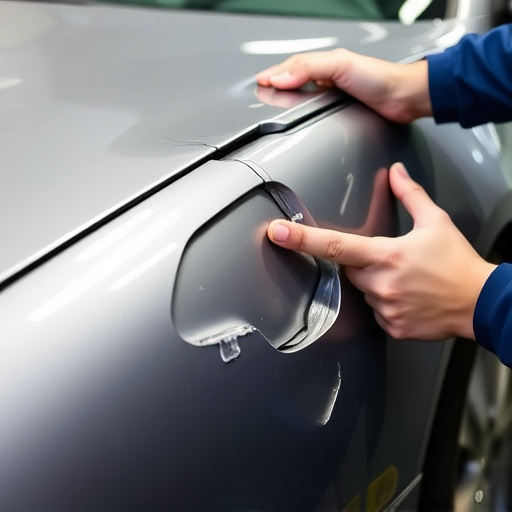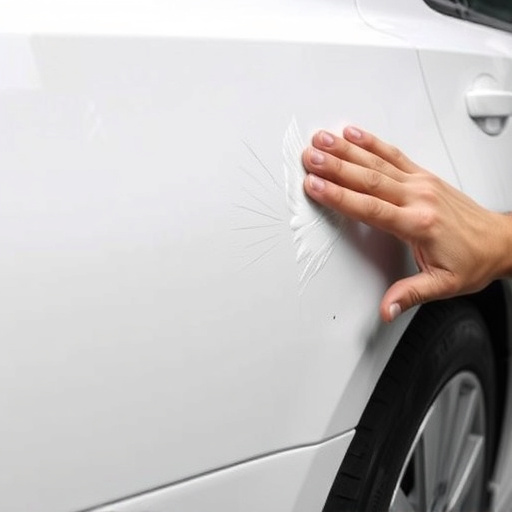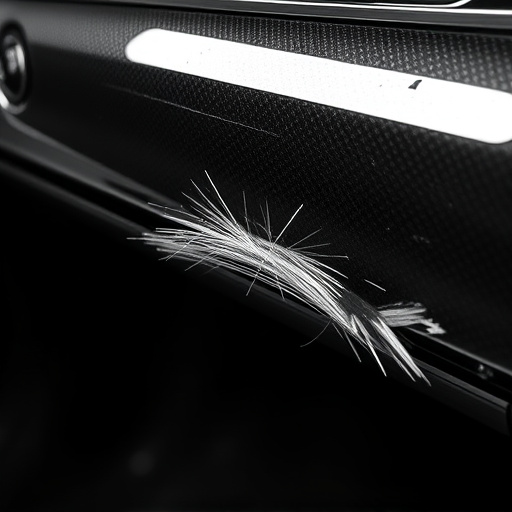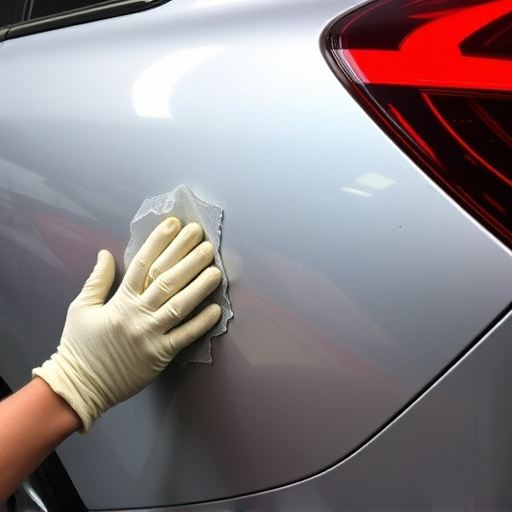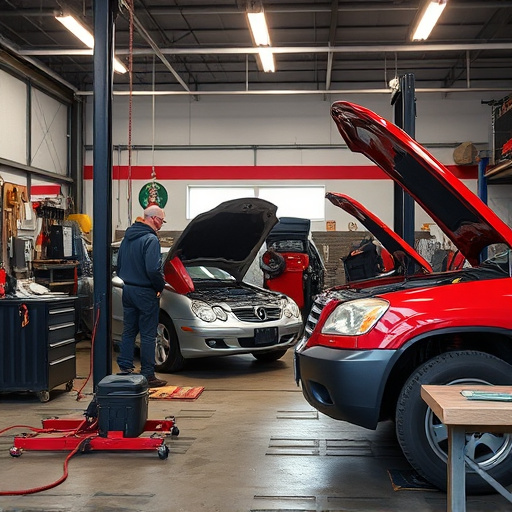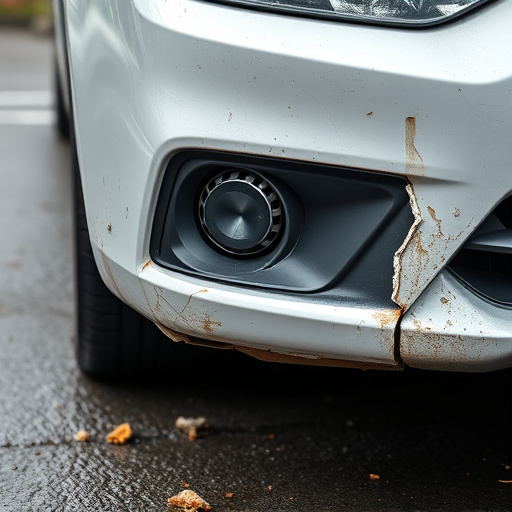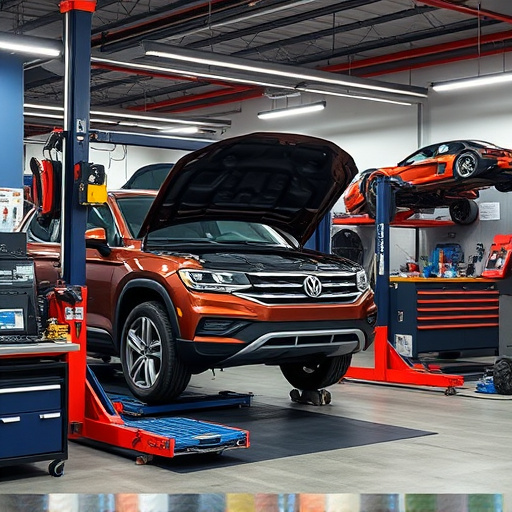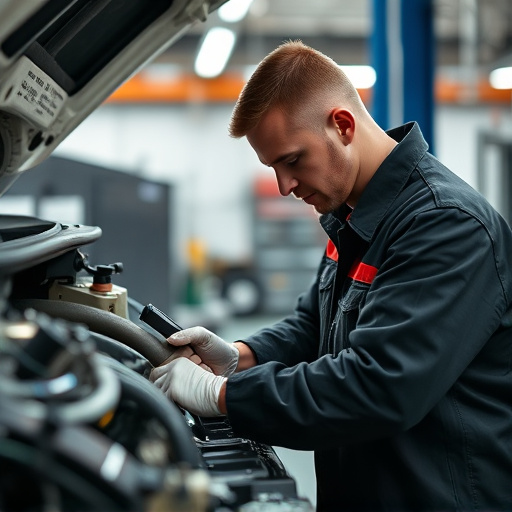Plastic welding technology is a specialized process that seamlessly binds plastic parts while preserving key material properties like flexibility, corrosion resistance, and durability. Crucial for top-tier car repairs, especially bumper restoration, its importance has grown with advancements in vehicle design favoring more plastic components. Skilled technicians use this technique to restore damaged parts to original specifications, ensuring safety, aesthetics, and optimal performance. This technology offers significant advantages over traditional methods in the automotive and collision repair industries due to its versatility and precise heating control, minimizing heat damage to surrounding areas. Its non-invasive nature reduces potential weaknesses, making it a reliable choice for high-quality repairs across diverse sectors like manufacturing and medical devices, leading to enhanced product lifespans and user satisfaction.
“Plastic welding technology has emerged as a game-changer in the realm of repairs, offering unparalleled precision and durability. This innovative process is essential for maintaining high-quality standards across various industries. From automotive to healthcare, understanding plastic welding technology provides a comprehensive solution for complex repair needs. Its advantages, including enhanced material bonding and reduced waste, make it an ideal choice for ensuring long-lasting results. Explore how this technology is revolutionizing repairs and its diverse applications in our detailed overview.”
- Understanding Plastic Welding Technology: A Comprehensive Overview
- Advantages of Plastic Welding for Quality Repairs
- Applications and Industries Benefiting from This Innovation
Understanding Plastic Welding Technology: A Comprehensive Overview
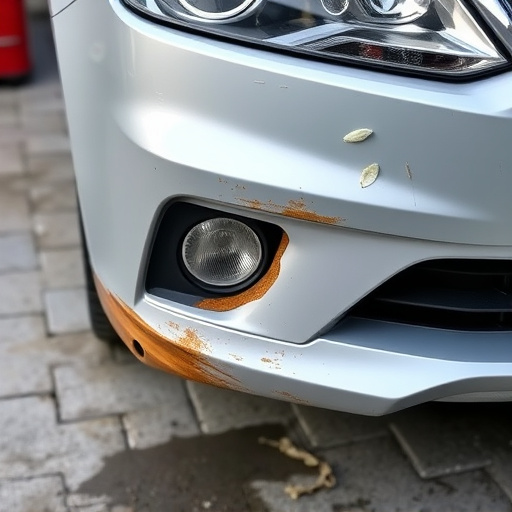
Plastic welding technology is a sophisticated process that involves melding two or more plastic parts together to create a strong, seamless bond. Unlike traditional metal welding, which relies on melting and fusing metals, plastic welding employs specialized techniques tailored for polymer materials. This comprehensive approach ensures that the unique properties of plastics—such as their flexibility, resistance to corrosion, and durability—are preserved in the repair process.
Understanding plastic welding technology is crucial for delivering top-tier car repair services and auto repair services, especially when addressing bumper repairs. With advancements in vehicle design incorporating more plastic components, efficient and effective plastic welding has become an indispensable skill. It allows technicians to restore damaged parts to their original specifications, ensuring safety, aesthetics, and the long-term performance of vehicles.
Advantages of Plastic Welding for Quality Repairs
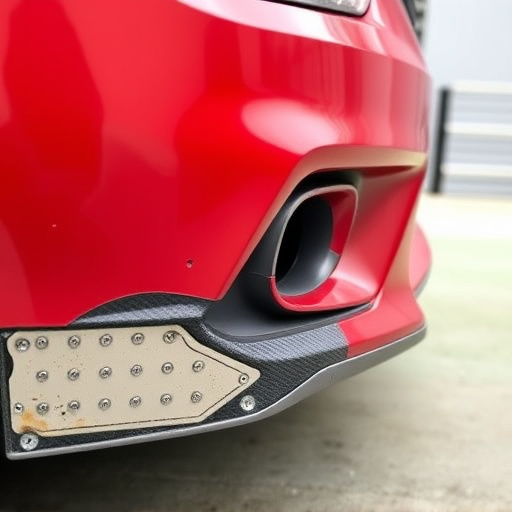
Plastic welding technology offers several advantages when it comes to quality repairs across various industries, including automotive and collision repair centers. One of its key benefits is the ability to join a wide range of thermoplastic materials, ensuring structural integrity and durability in repairs. This versatility is particularly valuable for complex components where traditional welding methods might not be feasible or could cause material weakness.
Moreover, plastic welding provides precise control over the heating process, allowing technicians to create strong bonds while minimizing heat-related damage to surrounding materials. This precision is especially important in tire services and other applications where maintaining specific part dimensions is critical for safety and performance. The non-invasive nature of plastic welding technology also reduces the risk of introducing new weaknesses or points of failure into the structure, making it a reliable choice for high-quality repairs across diverse sectors.
Applications and Industries Benefiting from This Innovation
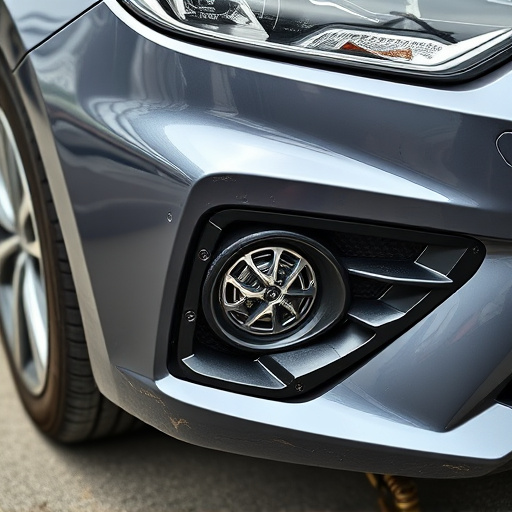
Plastic welding technology has revolutionized various industries by offering precise and durable repair solutions. Its applications are vast, ranging from automotive to manufacturing and even medical device production. In the automotive sector, for instance, plastic welding is instrumental in car body restoration, enabling mechanics to fix cracked or damaged parts efficiently. This innovation is particularly valuable for luxury vehicle manufacturers like Mercedes-Benz, where precision and quality repairs are paramount.
Beyond auto repair near me, plastic welding technology finds its utility in diverse fields. It facilitates the creation of complex components with intricate designs, ensuring strength and longevity. This versatility makes it a go-to method for many businesses seeking reliable and cost-effective solutions. From simple household items to sophisticated machinery, plastic welding guarantees that repairs are not just temporary fixes but long-lasting replacements, enhancing product lifespan and user satisfaction.
Plastic welding technology is a game-changer in the repair industry, offering precise, durable solutions across diverse sectors. Its advantages are clear: enhanced structural integrity, material conservation, and efficient, cost-effective repairs. As this technology continues to evolve, it will undoubtedly play an even more crucial role in ensuring quality, longevity, and sustainability for various products and applications.

